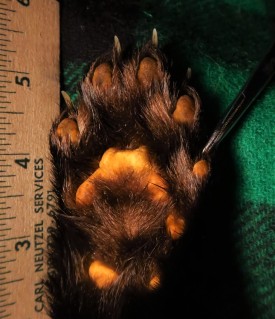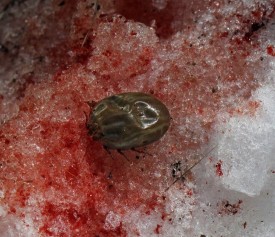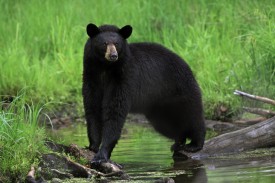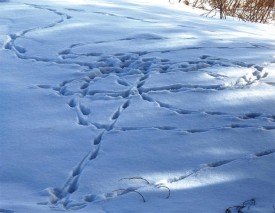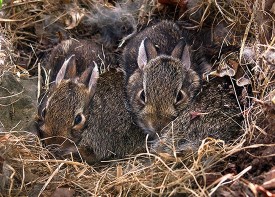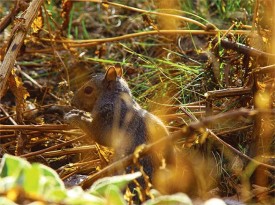Though it’s often called “fisher cat” or “black cat,” the fisher (Pekanis pennanti) rarely fishes and is not a cat. The fisher’s only likeness to the…
Tracking Tips
Regular Northern Woodlands magazine column by Susan Morse about tracking in the Northeast.
Tracking Tips: Relief From Herbivory
While performing field necropsies on moose, Maine biologist Lee Kantar has observed as many as 90,000 winter ticks on a single victim. Such moose are anemic and malnourished. With vital fat…
Tracking Tips: Grazing Bears
By the end of April, black bears have shrugged off winter’s dormancy and are getting hungry. They may get lucky and discover a winter-killed deer and get to indulge in its valuable…
Tracking Tips: Snow Birds: Staying North for the Winter
Temperatures may plunge to 50 degrees below zero on Nunavik Quebec’s Ungava peninsula. But there, at the northernmost edge of our northern woodlands, lives a species of bird that toughs…
Tracking Tips: Wee Beasties Watch Out!
The familiar red fox is the most widely distributed carnivore on the planet. Throughout North America, I’ve admired these handsome animals in arctic Canada’s barrenlands, southern…
Tracking Tips: Summer’s Other Nest Builders
By late May, we are cheered by the melodious songs of birds – birds which, at this time of year, are busy building nests, guarding them, and soon caring for their newborn occupants. But…
Tracking Tips: Sign of Wee Beasties in Spring
On winter outings in snow, we often see the minute trotting tracks of meadow voles and the bounding track-sets of white-footed mice and deer mice. Weighing just one or two ounces, the wee…
Tracking Tips: Snow Roosts
I still remember my childhood excitement when my grandfather explained to me what those holes were in the deep snow. “Snow roosts,” he explained, and they’re made when a…
Tracking Tips: Looking Closely at Bear Nests
Except for the Minnesota black bear that chose to spend the winter hibernating 70 feet up in a bald eagle nest, North American black bears don’t hang out in tree nests. Rather, the…
Tracking Tips: Putting Food Up
We start putting food up in August – about the time we can smell the sun-warmed tomatoes, even before we gather them for canning. “Putting food up” is a curious expression.…


